Crafting the uncraftable: Designing “diagnostics”
04 Oct 2018
Written by Ruth Neale and Shae Harmon, Longitude Prize
To tackle the growing levels of antibiotic resistance, the Longitude Prize team have challenged the public to create an affordable and effective test to detect bacterial infections.
However, we don’t just work with the current 75 competing teams of researchers, scientists, engineers and healthcare providers across the world to come up with a useful point-of-care diagnostic test for antibiotic resistance…
Sometimes, we also challenge the lay public and their creative skills to explain what the Longitude Prize is trying to achieve, but….with crafts. At New Scientist Live , the Superbugs-themed Science Museum Lates and the Royal Society’s Summer of Science Lates, all in London, we have explained the concept of a medical diagnostic test for antibiotic resistance through the medium of arts and crafts.
You are making what?!
Using LEDS, colourful pipe cleaners, kazoos, petri dishes, clay, stickers and more we asked children and adults alike to design a concept for an antibiotic diagnostic that has specific criteria, not unlike the real Longitude Prize. First, they needed to select a “bodily fluid” sample of blood, phlegm or urine (fake, of course!), to refer to when building a test idea out of crafts. The prototype “test” that they are meant to build needed to identify if a patient had a bacterial or viral infection, or if a certain bacteria had resistance to antibiotics.Their test designs needed to have a timer (whether drawn on with a sharpie or using a timer sticker) and “achieve a rapid result” from the sample (hypothetically) within 30 minutes. It also needed to be battery powered which could be symbolised with a popsicle stick or a drawing, for example. Once they completed their design, we asked them to explain it and the Longitude Prize team would then approve their design for safety, by sticking a CE sticker on it, if we were satisfied with their description.The imaginary crafted diagnostics needed to be:
- rapid by giving results in 30 minutes from sample collection.
- battery powered – so the test would be able to work across the world in remote settings and not rely on access to mains powers.
- CE approved – of course it must be safe to use!
Communicating the problem of antibiotic resistance is a challenge and the pitch needed to be tailored for each visitor. Our arts and crafts activity helped young children get stuck in and build from their imagination, while others from various scientific industries tried their best to create a microfluidics or PCR test. This way, no one needs a background in medicine or science to design a test. Having examples of other diagnostics such as pregnancy tests, HIV tests, pH tests, glucose tests and more got the public thinking about how a simple and rapid test for antibiotic resistance could change the way we diagnose infections.
We also asked some key questions for creators to consider when designing their test:
- What does this test tell the prescriber and how does it work? Is it handheld?
- What setting would this test be used in? A GP surgery, a hospital, or laboratory?
- Who would use this test? Often simple tests work best, think of the pregnancy test!
- Could you use this test in all countries worldwide? Even those with little healthcare resources?
We enjoyed speaking to a range of people, from 5-year olds to GCSE students through to retired doctors, as they created many inspirational diagnostics. The children asked engaging questions to further their understanding and have a go at building their own test – hoping for a chance to win a giant microbe toy! From breathalysers to watches and petri dishes, we had an assortment of creative ideas, which meant the fundamental purpose of our activity was a success.
Building their own diagnostic tests - Mini Longitude Prize competitors
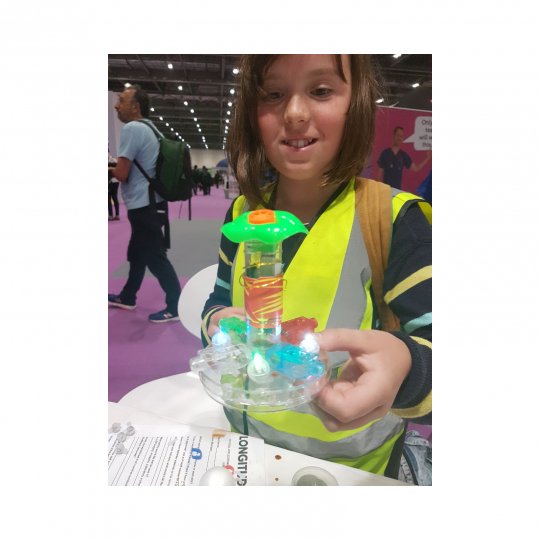
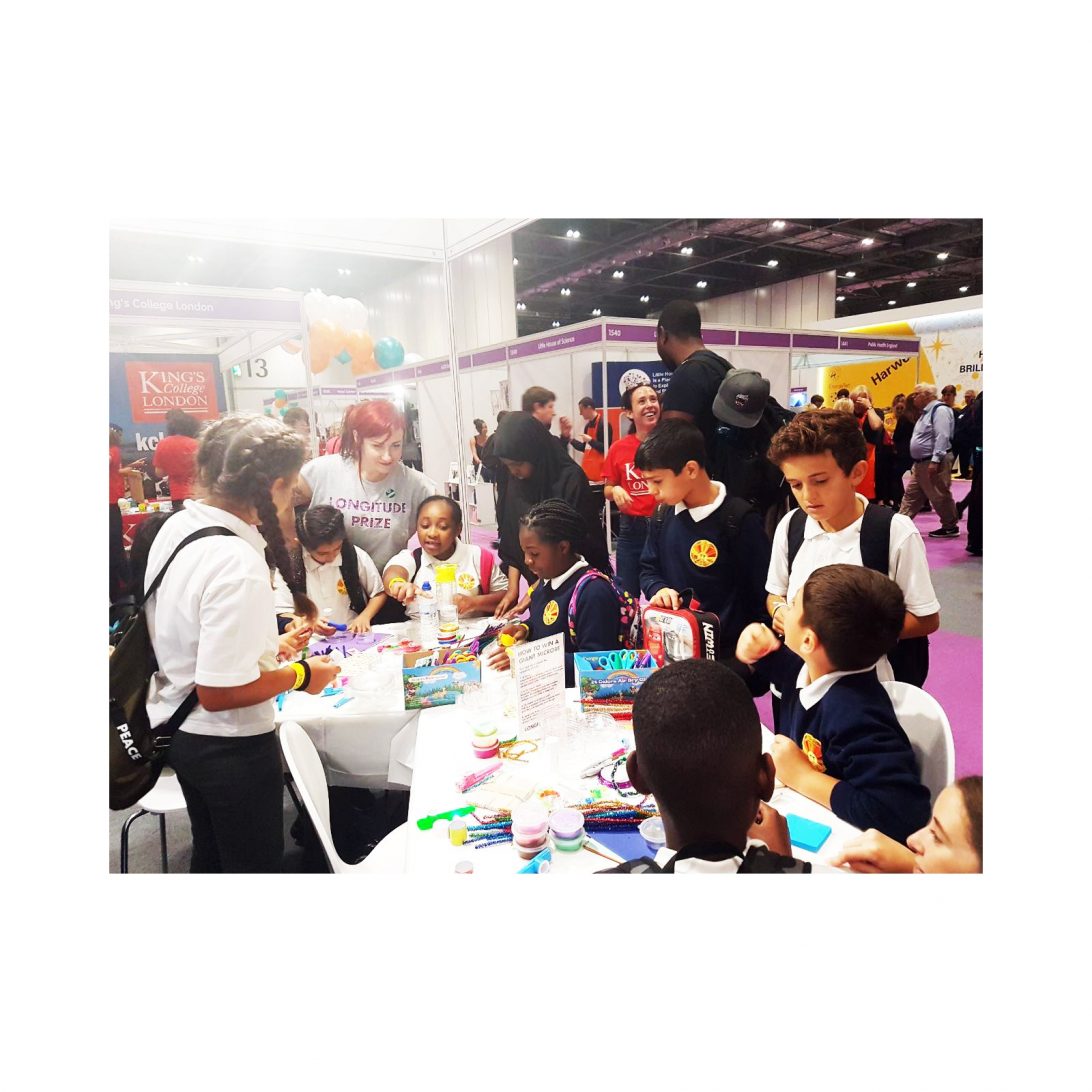
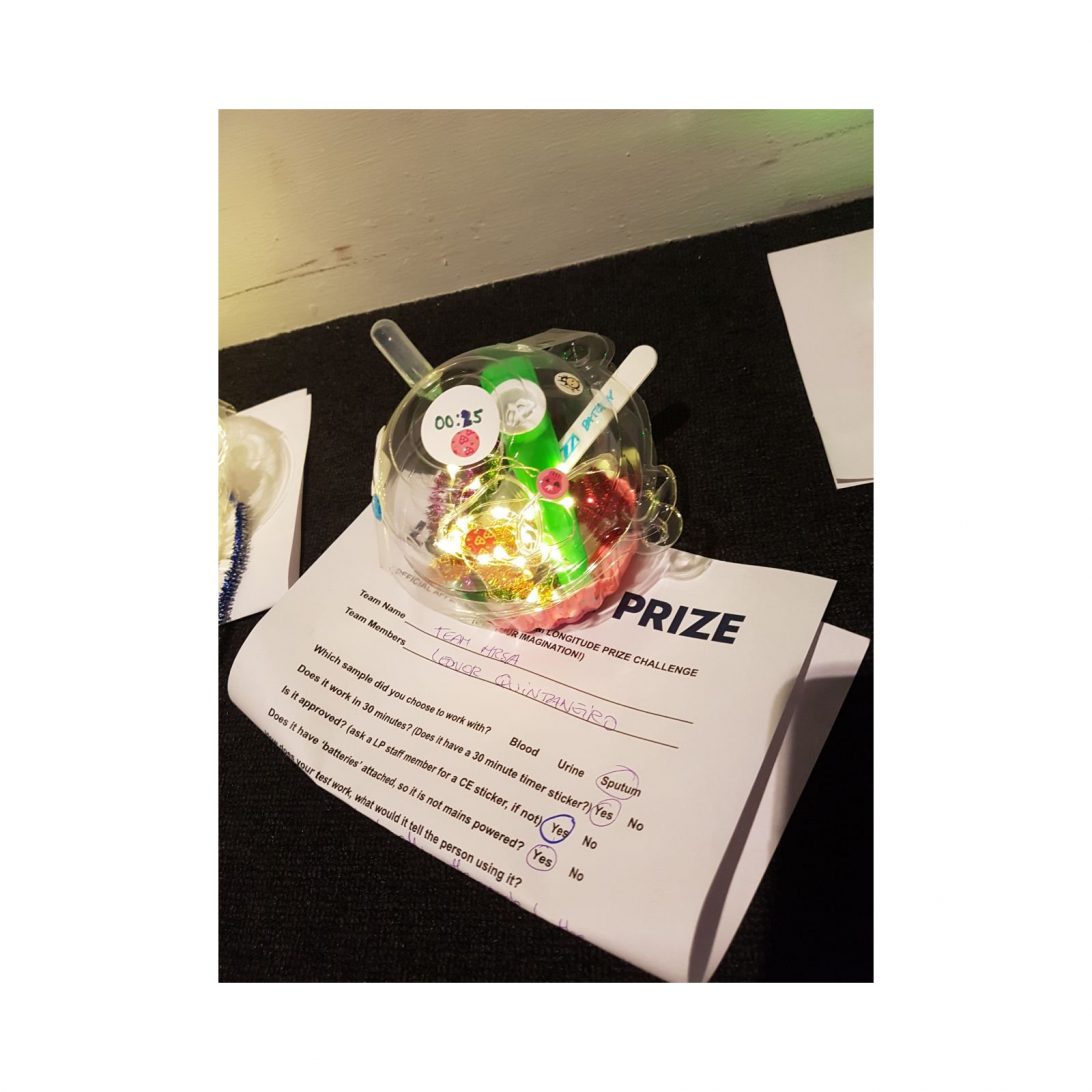
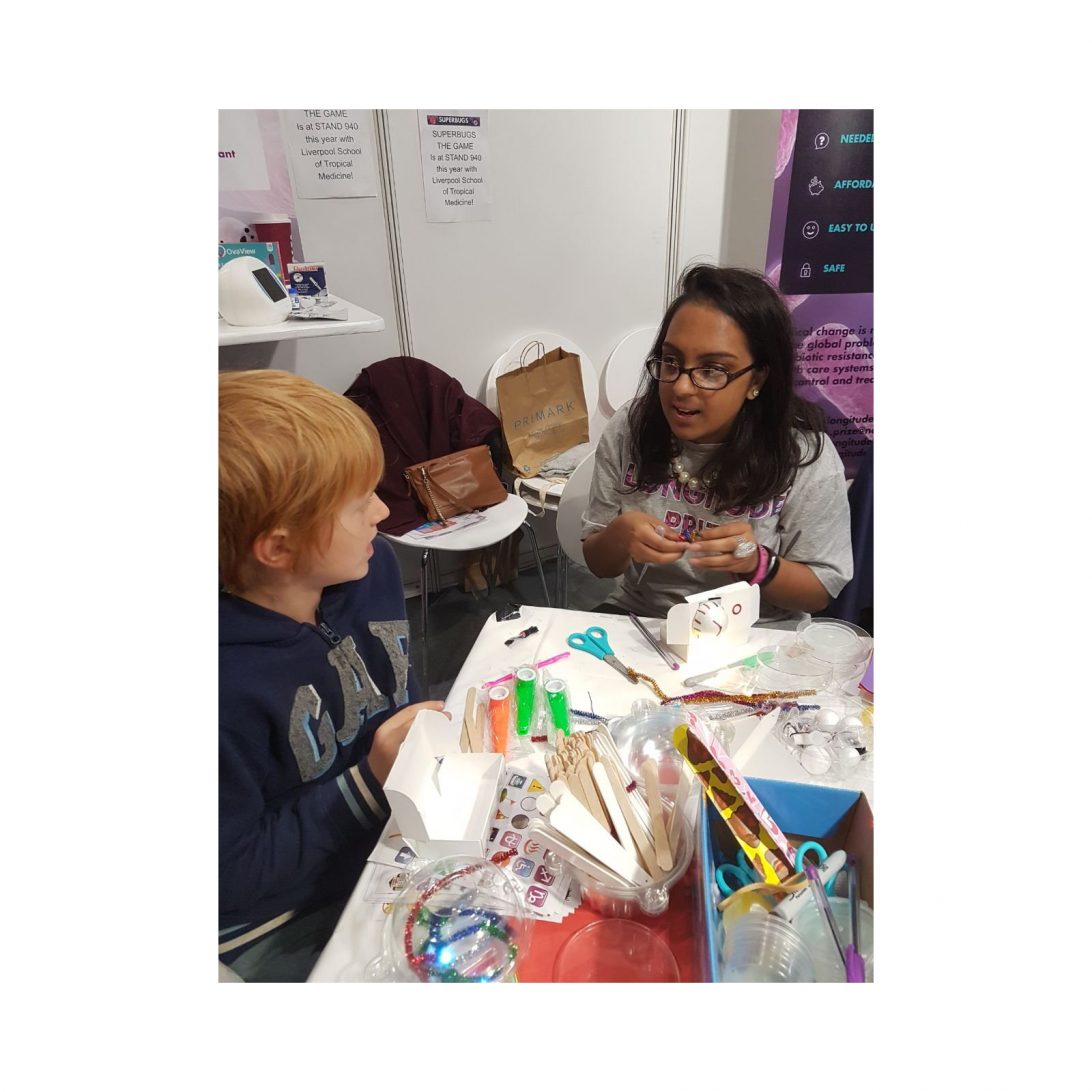
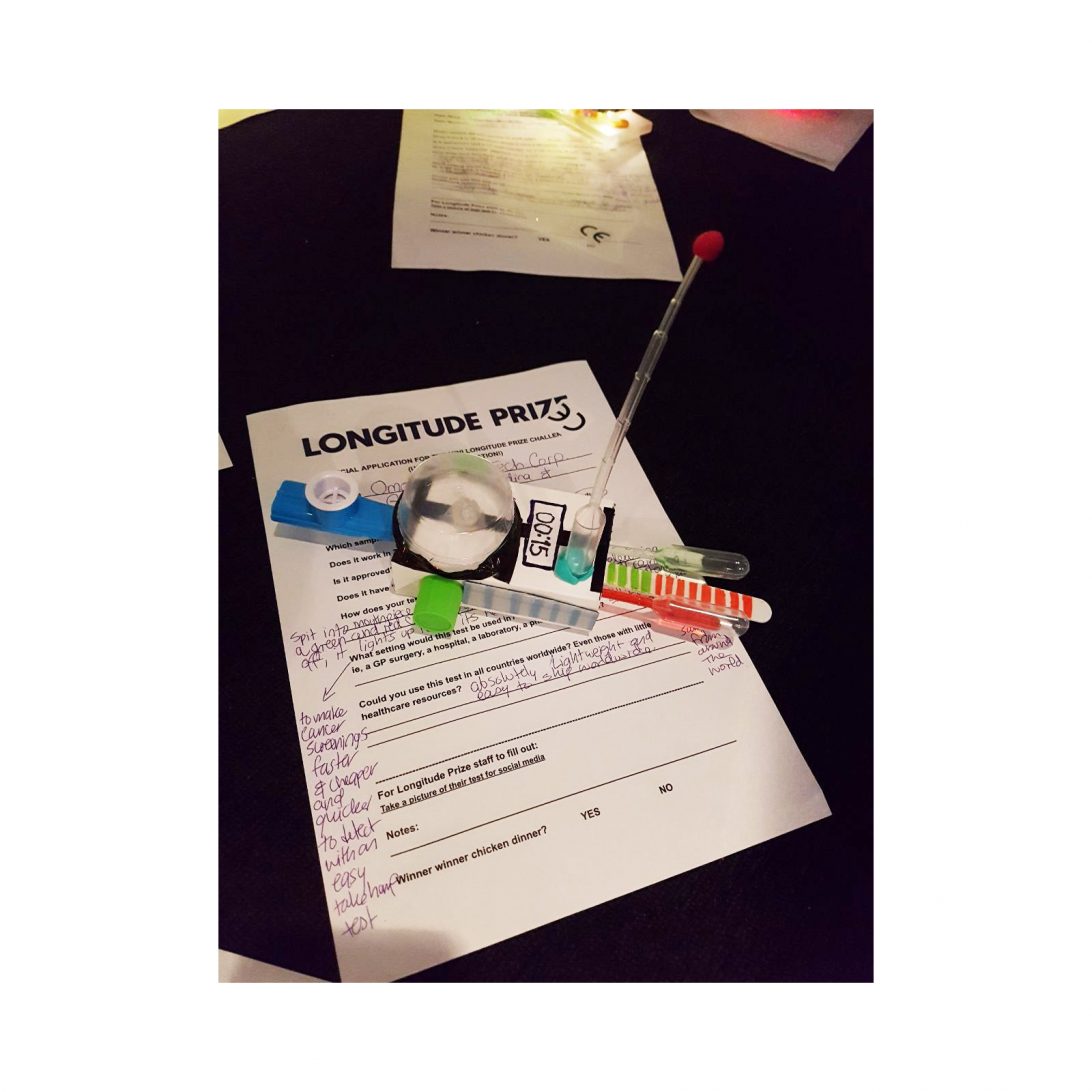

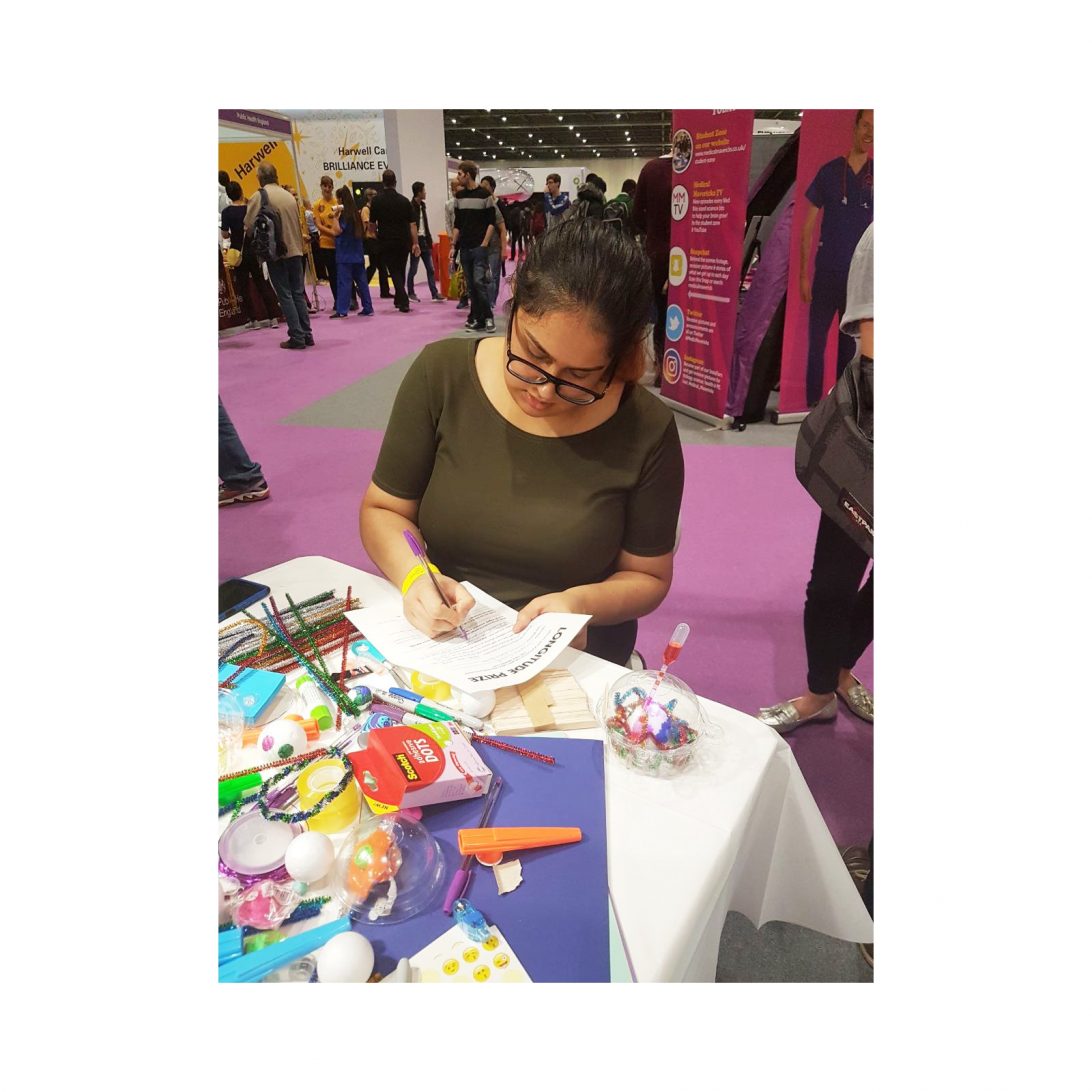
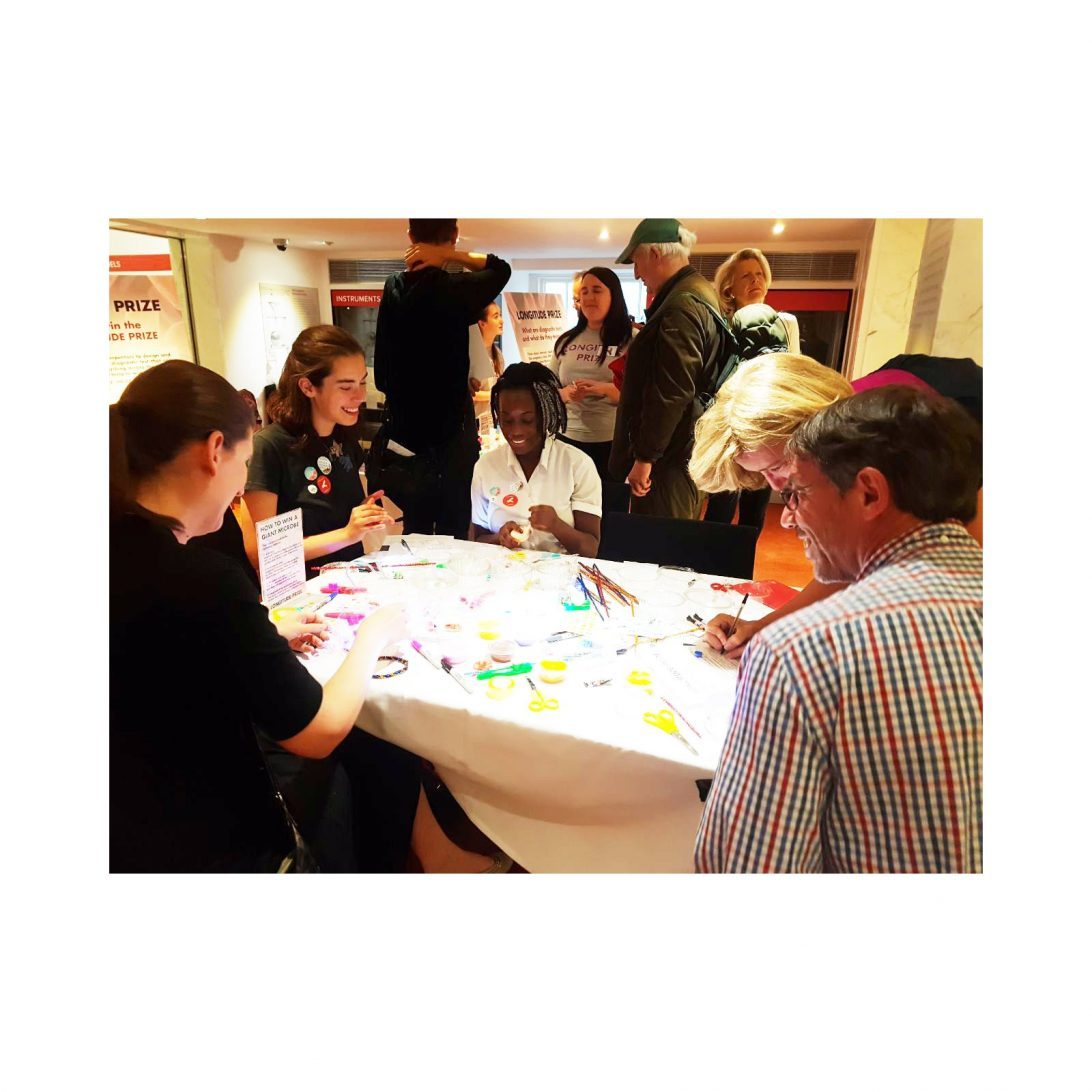



New Scientist Live!
Our latest stall attracted 100s of visitors throughout the four days we were at New Scientist Live – in the exhibition hall for ‘Human’s Theatre’, the arts and crafts table certainly enticed the crowds, as well as our looped tv screening of the recent film exploring fighting superbugs in India.
The Longitude Prize team also developed A quick guide to diagnostics for antibiotic resistance (see below) for anyone to find out more about the Longitude Prize and the types of diagnostics that teams are working on.
New Scientist Live had a fantastic range of speakers from all over the world and professions. Cosmologist and space scientist expert (and our very own Committee Chair), Lord Martin Rees gave an outstanding talk on the first day exploring the posthuman future.
Our friends at the Liverpool School of Tropical Medicine were also in the exhibition hall with their activity called Swab and Send – a citizen scientist project inviting people to swab surfaces which are then analysed to identify potential target antibiotics – and our infectious game, ‘Superbugs’.
Watch out for other events the team will be attending here and if you would like us to bring our Mini-Longitude Prize competition to your event, please email us at longitude.prize@nesta.org.uk
